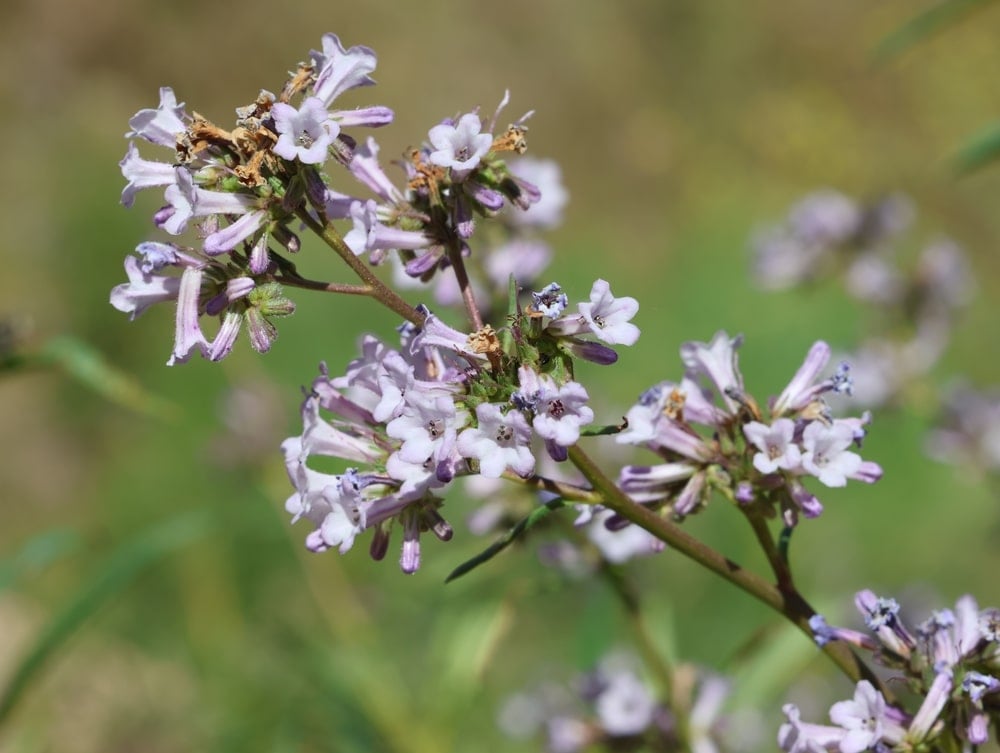
Yerba Santa, also known as the “holy herb,” “holy weed,” or “mountain balm,” is a potent medicinal plant with a rich history of use among Native Americans and herbal healing practitioners. Scientifically known as Eriodictyon californicum, this aromatic shrub is native to California, northern Mexico, and parts of the southwestern United States. Its sticky leaves and fragrant aroma have made it a revered gum plant throughout centuries, valued both for its spiritual significance and therapeutic properties.
Traditional Uses of Yerba Santa
Among Native Americans, yerba santa leaves were integral to herbal preparations used to treat a variety of respiratory ailments such as coughs, asthma, bronchitis, and tuberculosis. The plant’s expectorant qualities helped loosen mucus in the chest, making it easier to breathe. Additionally, the leaves were applied as poultices to treat bruises, rheumatic pain, wounds, and insect bites. The Amah Mutsun and other tribes also used yerba santa to purify the blood and alleviate stomach aches, diarrhea, and other digestive issues.
Burning yerba santa was a sacred practice, where the smoke was believed to cleanse the spirit and environment, banishing negative energies. This ritual use highlights the plant’s role as a sacred herb, bridging physical healing and spiritual protection. The aromatic smoke was often combined with other smudging herbs like sage and cedar to enhance its protective qualities.
Chemical Composition and Medicinal Properties
Yerba santa contains a variety of chemicals, including flavonoids such as eriodictyol, homoeriodictyol, and sterubin, which have been studied for their antioxidative and anti-inflammatory effects. Notably, sterubin is recognized as a potent neuroprotective compound with potential benefits in age-associated phenotypic screening related to Alzheimer’s disease. These compounds contribute to yerba santa’s traditional use in treating respiratory conditions and its emerging role in modern herbal medicine.
Recent research has also explored the eriodictyon californicum extract for its ability to aid in weight management and energy metabolism. A study published in J Med Food demonstrated that a food supplement containing this extract helped reduce body weight and fat in women with obesity, suggesting promising applications beyond traditional uses.
Modern Applications and Herbal Preparations
Today, yerba santa continues to be used in various herbal preparations, including teas, tinctures, and topical applications. The tea made from yerba santa leaves is popular for soothing respiratory conditions and promoting overall health. Additionally, the plant’s essential oils are used in aromatherapy for their calming and protective effects.
The antioxidative santa herba extract is gaining attention in integrative wellness for its potential to reduce inflammation and support cognitive health. However, it is important to follow relevant directions on product labels and consult healthcare professionals, as natural products are not necessarily safe in all contexts, especially during pregnancy or breastfeeding.
Safety, Dosage, and Precautions
While yerba santa is generally considered safe when consumed in amounts commonly found in food or traditional medicine, there is insufficient reliable information regarding an appropriate dose for medicinal use. The British Pharmaceutical Codex and other historical references acknowledge its use but do not provide standardized dosing guidelines.
Users should exercise caution and follow relevant directions when using yerba santa products. Avoid use during pregnancy and breastfeeding due to limited safety data. Additionally, those taking medications such as lithium should consult healthcare providers, as yerba santa may interact by affecting the body’s elimination of certain drugs.
Yerba Santa in Cultural and Spiritual Contexts
Beyond its medicinal applications, yerba santa holds a revered place in Native American spiritual practices. Known as the “holy weed,” it was used in purification ceremonies to cleanse spaces and individuals. The act of burning yerba santa was more than a physical ritual—it was a sacred connection to the earth and the spirit world, embodying the essence of the sacred herb.
Conclusion
Yerba santa is a multifaceted plant that embodies the intersection of traditional herbal healing and modern scientific interest. From its historical use by Native Americans to its emerging applications in neuroprotection and weight management, this sacred herb continues to offer valuable benefits. With its rich chemical profile and cultural significance, yerba santa remains an important medicinal plant worthy of respect and careful use.
Note: Always consult with a healthcare professional before starting any new herbal treatment, and ensure you purchase yerba santa from trusted sources to guarantee quality and sustainability.
References
- Maher, P., Fischer, W., Liang, Z., et al. (2020). The value of herbarium collections to the discovery of novel treatments for Alzheimer’s disease, a case made with the genus Eriodictyon. Frontiers in Pharmacology, 11, 208. doi:10.3389/fphar.2020.00208
- Mödinger, Y., Schön, C., Wilhelm, M., Pickel, C., Grothe, T. (2021). A food supplement with antioxidative santa herba extract modulates energy metabolism and contributes to weight management. Journal of Medicinal Food, 24(11), 1235-1242. doi:10.1089/jmf.2021.0016
- Duke, J. A. (2002). Handbook of Medicinal Herbs (2nd ed.). CRC Press.
- Anderson, M. K. (2016). Yerba Santa, a Medicinal Plant Extraordinaire. Amah Mutsun Land Trust. https://amahmutsun.org/land-trust-newsevents/yerba-santa-a-medicinal-plant-extraordinaire
- Khan, I. A., & Abourashed, E. A. (2010). Leung’s Encyclopedia of Common Natural Ingredients Used in Food, Drugs, and Cosmetics (3rd ed.). Wiley.
- Barrett, S. A., & Gifford, E. W. (1933). Bulletin of the Public Museum of the City of Milwaukee, 2(4), 117-376.
- British Pharmaceutical Codex (1911). Council of the Pharmaceutical Society of Great Britain.
- Weiner, M. A., & Weiner, J. A. (1999). Herbs That Heal: Prescription for Herbal Healing. Mill Valley, CA: Quantum Books.
Masterful Display
Each and everyone of our products are deeply considered, labored over, and improved upon time and time again. We invite you to experience the difference of our carefully crafted small batches of herbal support items. Whether it be our tea line, produced for a delightful experience, or our tincture blends and extracts, we have what you need.

